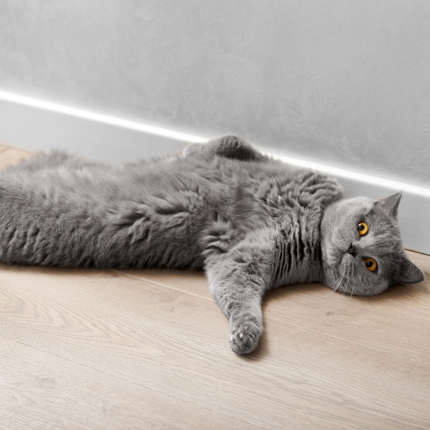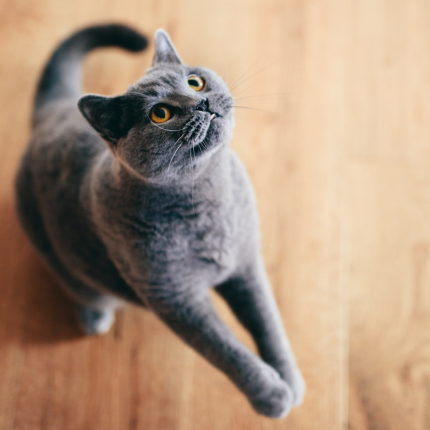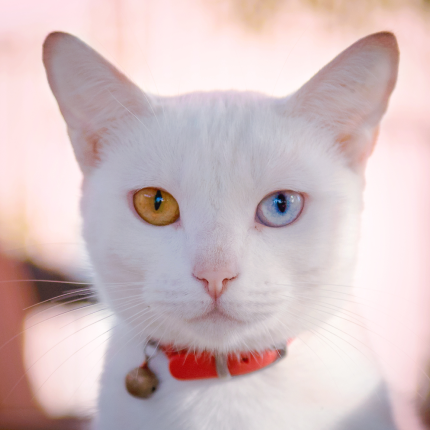Understanding a Cat’s Primordial Pouch

Have you ever noticed your feline friend’s belly sagging peculiarly? You may have wondered if she gained a little weight, but there’s more to this curious feature than meets the eye. Meet the primordial pouch, an abdominal flap that sometimes swings from side to side as cats move. This unique characteristic is present in all cats, regardless of breed or gender, and serves various purposes that contribute to their advanced agility and survival skills.
What is the Primordial Pouch
As its name suggests, the primordial pouch is an essential part of a cat’s biological makeup that’s been around since the earliest evolutionary stages. All felines possess this sagging belly, from the tiniest domestic kittens to the mighty non-domestic big cats. The pouch is composed of loose skin and some fatty tissue and can vary in prominence among different breeds and genetic compositions. Some cats, like the Sphynx, have more evident pouches due to their lack of fur covering, while others, like the Maine Coon, might have more discreet ones. Cat breed registry organizations, such as The International Cat Association, even require some breeds (like the Pixiebob) to have low-hanging bellies to win competitions.
Roles of the Hanging Belly
Now that we’ve explored what the primordial pouch is, let’s delve into why cats have this unique feature. A cat’s hanging belly offers several advantages, making it an essential aspect of their physical and behavioral capabilities:
Protection: Beyond its swaying movement, the loose skin of the primordial pouch plays a crucial protective role for a cat’s vital organs, including the liver. Whether it’s two house cats engaged in playful roughhousing or fierce tigers battling in the savanna, cats can exhibit aggression with their powerful kicks, such as the famous bunny kick during playtime. In such situations, the primordial pouch acts as an additional layer of armor, reducing the risk of severe injuries.
Flexibility: Cats are renowned acrobats, and the excess skin of the pouch contributes to their exceptional agility when escaping from potential predators. Thanks to their strong hind legs, the belly flap allows them to twist, wiggle, and execute high leaps effectively. This flexibility proves advantageous when they effortlessly jump onto kitchen counters, displaying their remarkable athleticism.
Food Storage: The elasticity of the primordial pouch also serves an essential purpose during mealtime. Much like humans wearing loose-fitting pants after indulging in a hearty meal, a cat’s abdominal flap expands their abdomen for food storage. In the wild, where cats might consume one large meal daily, this flexibility is beneficial, even for our domestic house cats; the pouch functions like their favorite pair of leggings or sweatpants, accommodating occasional indulgences.
What Causes an Extra Chonky Primordial Pouch
Obesity: Cat owners may occasionally mistake the primordial pouch for a sign of obesity. However, while wild big cats might experience distended bellies after consuming large prey, an overweight or obese cat’s abdominal area is generally fatty and less swaying. To distinguish between a pouch and obesity, cat parents can assess their feline’s body condition. The cat might be overweight if their ribs and other bony areas are challenging to feel due to a thick layer of fat. In contrast, a pouch remains present, even in the thinnest cats, and the ribs and joints can typically be felt. Maintaining a cat’s healthy weight through a balanced diet and regular exercise is essential to prevent obesity-related health issues.
Pregnancy, Spaying, and Neutering: In female cats that wander outside and remain unspayed, a sagging belly may indicate pregnancy, with the distension becoming noticeable around week five. Pregnant cats should be taken to the vet for confirmation and proper care. Additionally, spaying and neutering procedures may cause some cats to gain weight due to hormonal fluctuations. Although these procedures don’t directly affect the primordial pouch, careful attention to diet and nutritional needs can help maintain a healthy weight for spayed and neutered cats.
Aging: Like humans, cats experience a loss of skin elasticity with age. As cats grow older, the excess skin on their abdominal flap may sag more, making the primordial pouch more prominent. To support their well-being, pet parents should consider switching senior cats to specially formulated cat food, starting at around the age of seven, to accommodate their changing metabolism.
When to Seek Veterinary Attention for a Cat’s Abdomen
As cats age, their abdominal region can serve as a helpful indicator of their overall health. If cat owners notice lumps in the pouch and rule out pregnancy, scheduling a vet appointment is critical. While not all lumps are cancerous, some female cats may develop breast cancer, leading to lumps in their abdominal area. Regularly observing the pouch and consulting a vet can ensure any unusual findings that require prompt attention and treatment.

Featured Articles

Greebles and Cats: The Origin and the Meaning
You may have seen an internet sensation concerning cats labeled “greebles.” Feel out of the loop? We’re here to help you. In 2019, Reddit user /user/literallyatree commented on a Reddit post about a cat that looks like it’s trying to slap a ghost. This user commented: “My family calls things…

Why Do Cats Roll Over Into Their Backs But Not Let You Touch Their Bellies?
It’s common knowledge dogs love to have their tummies rubbed when they freely lay down before you and roll onto their backs. But, if you’re also familiar with cats, you know that when they roll onto their backs with their bellies exposed, rubbing the belly will most likely result in…

The Odd-Eyed Cat (AKA Heterochromia)
Cats are already beautiful and fascinating creatures, but people are bound to take notice when they have something as captivating as two different colored eyes. Odd-eyed cats always have one blue eye paired with either a green, yellow, or brown eye. This form of heterochromia occurs in other animals, including…
